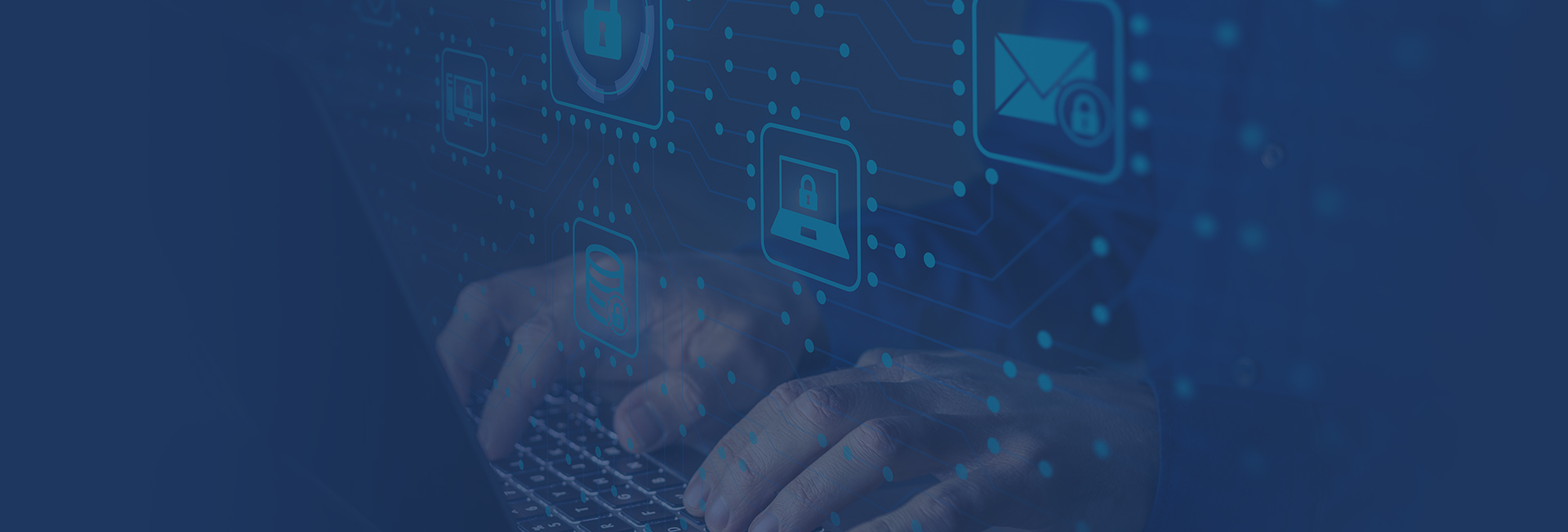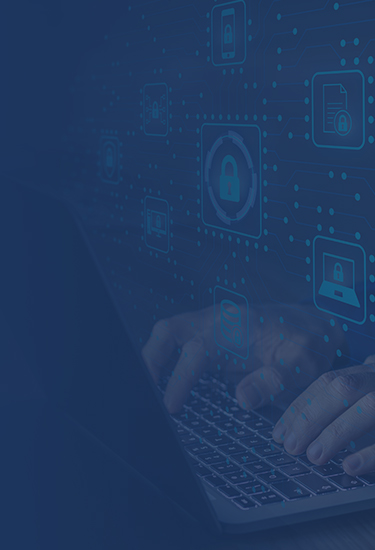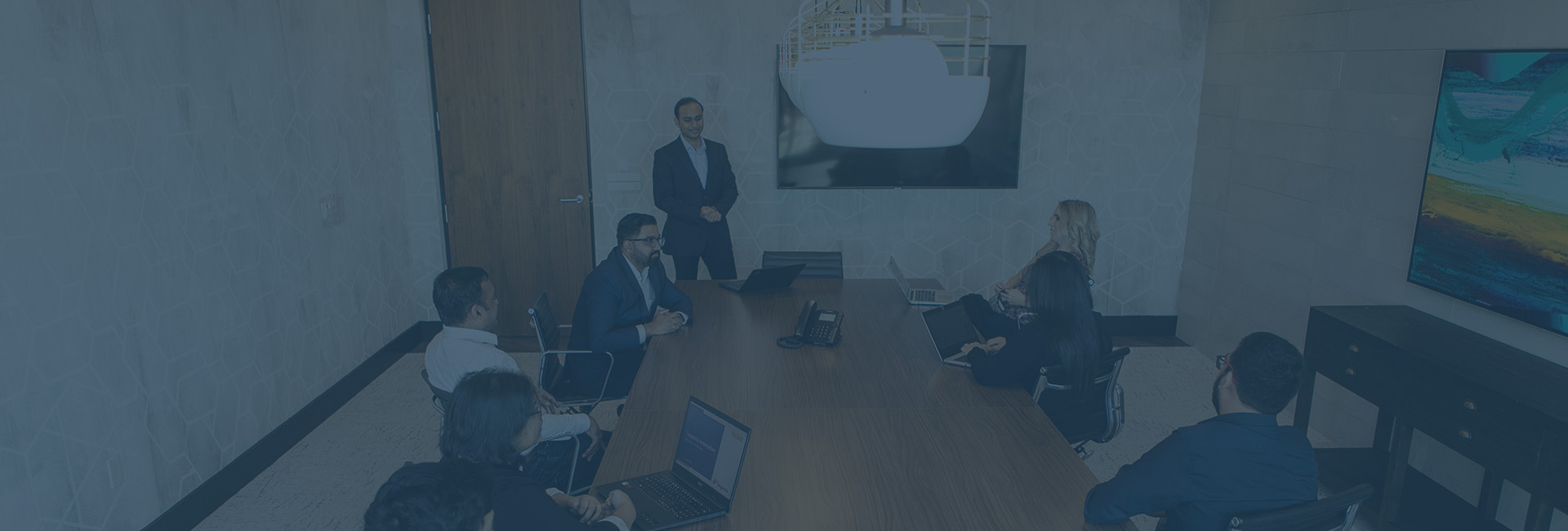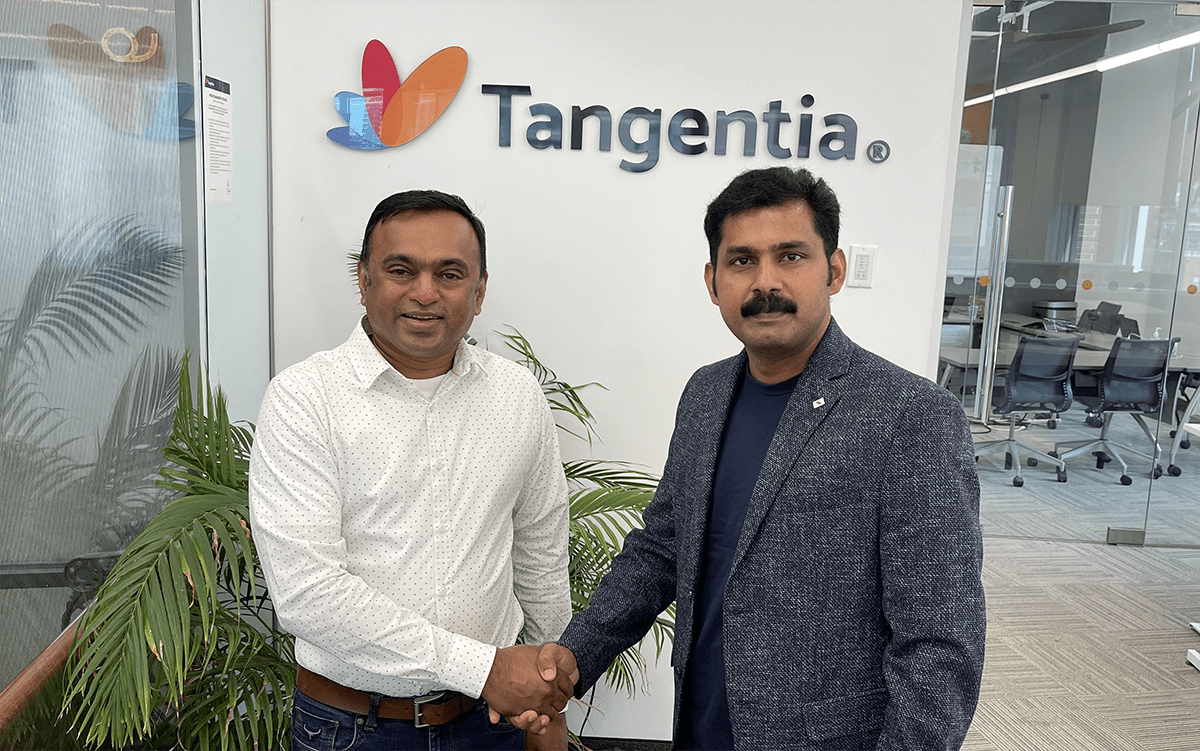|
|
||||||||||||||||||||||||||||||||||||||||||||||||||||||||||||||||||||||||||
|
||||||||||||||||||||||||||||||||||||||||||||||||||||||||||||||||||||||||||
Category: B2B
Women in Tech: Boosting Innovation and Profitability
What is the ADE framework?
If companies are to thrive amid the rapid transformation we continue to experience, they must reorient the relationships between society, government, and the way we do business. The ability to adapt to these changes, increase investment in digital transformation, and evolve to new business models will enable companies to better prepare for a future of growth.
The Autonomous Digital Enterprise is the framework for the successful future enterprise. It’s a digital-first business with distinct tech tenets and operating model characteristics that support transformation through actionable insights, business agility, and customer centricity.
Tech tenets
Leveraging and optimizing technology is key to ADE evolution. We’ve identified five technology tenets where an ADE should dedicate its efforts and investments by developing skills and curating solutions and tools for maximum impact. Coupled with the operating models listed below, these technology tenets represent the focus for successful outcomes of an ADE.
Transcendent customer experience
Deliver an omnichannel, multimodal, cloud-first experience powered by AI that:
- Gives customers and employees what they need by making technology feel more human
- Enables rich do-it-yourself experiences backed by human expertise
- Recognizes any device as a channel for interaction
- Leverages analytics and orchestration for a frictionless experience
Automation everywhere

Embrace new and emerging technologies and harness explosive data growth to drive highly automated business processes that are orchestrated, controlled, and executed by software. In an ADE, automation is a complementary business function that augments human effort. By exploiting automation across the datacenter and to the edge, organizations can:
- Execute with efficiency and scale
- Free up employees from mundane tasks
- Lower costs while improving customer interaction
Enterprise devops
Adopt and develop DevOps processes, tools, skills, teams, and leadership across software initiatives and existing portfolios to:
- Drive business agility, enable innovation, and delight customers
- Optimize for rapid continuous delivery of applications and services
- Embrace cultural and behavioral change to create a frictionless environment for success
- Propel security initiatives (DevSecOps) and data pipeline automation (DataOps)
Data-driven business
Create value from and monetize assets by making data central to the business, prioritizing robust analytics capabilities, and supporting a systematic approach to data strategy, architecture, operations, and execution. A data-centric mindset will allow businesses to:
- Extract enterprise-wide data, including IoT, social media, and customer engagement systems
- Employ artificial intelligence (AI) and machine learning (ML) to optimize, improve, guide, and execute actions
- Monetize data assets with high-value business use cases
Adaptive cybersecurity
Manage the growing risk landscape that has far exceeded the capacity for manual human intervention by automatically and programmatically mitigating new and evolving threats across the digital landscape:
- Extract enterprise-wide data, including IoT, social media, and customer engagement systems
- Employ artificial intelligence (AI) and machine learning (ML) to optimize, improve, guide, and execute actions
- Monetize data assets with high-value business use cases
It’s Time to See What AI Can Do for Your Business
Reach out to the Tangentia team to learn more about how TiA Core AI can help you combine the capabilities of AI with the humanity of your workforce.
Contact the Tangentia team today.
Why Tangentia?
Tangentia is a leader in AI technology. Learn the advantages of working with us.
Easy Integration
Full and seamless integration of our solutions with your systems ensures effortless adoption and smooth operation.
24/7 Support
Our offices in Canada, the United States, and India, allow us to offer you around-the-clock support via phone or email to keep your systems running smoothly.
Competitive Edge
We are a leader in helping companies maintain their competitive edge with the latest in intelligent technology tailored to their specific needs.
Explore Our TiA Platform Capabilities
Get Started on Your Digital Transformation Journey Today
Book a discovery call with a member of Tangentia’s team today to find out more about what we can do for you.
Monthly Tangentia Byte April 2022
|
|
|||||||||||||||||||||||||||||||||||||||||||||||||||||||||||||||
|
|||||||||||||||||||||||||||||||||||||||||||||||||||||||||||||||
Tangentia’s North American Sales and Leadership Expanding
Tangentia is proud to announce the expansion of our North American sales and leadership team. We understand the value people bring to our organization and it has been our goal since expanding into the USA. to create job opportunities for professionals throughout North America who want to be part of the quickly evolving artificial intelligence and automation industry.

We are excited to announce that Robert Lye is joining our leadership team as Vice President & Chief Evangelist – Automation. Robert will bring thought leadership and transformational thinking to Tangentia customers to aid in building and growing successful intelligent automation programs and accelerating value realization.
Seasoned by hands-on real-world experience, Robert offers great insights into the opportunities and challenges of digital transformation and will be an integral part of ensuring our customers have the tools and support they need to navigate the fast-paced world of automation.
“I am honored and humbled to be joining the Tangentia Family and to work alongside a remarkably talented team,” Robert says. “I am extremely excited for the journey ahead and look forward to enhancing the success of Tangentia customers.”
Also new to the Tangentia team is Joseph Saad, who joins us as our new Sales Account Executive based in Montreal, Canada. He speaks English, French, and Arabic and comes with a very experienced background in sales. Joseph has already embarked on his journey at Tangentia, and we look forward to building a robust Montreal-based team in the near future.

We are also pleased to welcome two new members of our executive sales team in the USA. Shawn Bakos is our new Sales Account Executive based in Delaware, USA. He comes with many years of experience in the IT field besides being in the US Navy. An avid sports person who played competitive ice hockey, we are pleased to have Shawn Bakos flying the Tangentia flag on the US East Coast.
Mike Fox is our new Sales Account Executive based in San Diego, California. Mike is an expert in sales farming, hunting, and fostering profitable win-win deals, and he has a passion for building long-lasting customer relationships. We are excited to have Mike on board and besides bringing on board the warm California sun, we are confident his experience will stand us in good stead on the US West Coast.
Vijay Thomas, Founder and CEO at Tangentia said “It is fantastic to have Robert Lye, take the plunge from being a customer of Tangentia to joining our senior leadership team. It is a ratification of the Tangentia strategy of growth and value creation for our customers.”
George Bennett, VP Sales at Tangentia mentions “ Alongside Bob, we are really excited to have Joseph in Montreal, Mike in San Diego and Shawn in Delaware join our team. It's full steam ahead from now on.”
Tangentia is passionate about bringing the best people onboard, so we can provide top-tier value to our customers through collaboration and innovation. We have been certified as a Great Place to Work for 2022 and we have been certified by the Canadian Aboriginal and Minority Supplier Council as an aboriginal and minority business enterprise.
As one of INC 5000’s Fastest Growing American Companies in 2018 and one of Growth 500’s fastest-growing companies in Canada 6 years in a row, we are always looking for top talent. Visit our Careers page to find out more about how you can become part of the Tangentia team.
Process Mining Defined | What It Is, How It Works, And What It Can Do For Your Business
Legacy business process management is obsolete.
Not that it worked particularly well to begin with. Per The Harvard Business Review, too often when reengineering a process, businesses fail to focus on how the process currently performs. While charting out the way they want things to work, they lose sight of the inefficiencies, bottlenecks, and performance problems within their existing ecosystem.
On the opposite end of the spectrum, there are the businesses that embroil themselves too deeply in analyzing their existing processes. In the absence of any effective process management tools, they spend inordinate time and resources on interviews and qualitative observation. The end result is the same.
Nothing gets done.
Even in organizations where roadmapping and analysis are well-balanced, there is a lack of visibility. A lack of connectivity between processes and the business's enterprise information system. Process mining represents the solution to that problem.
What Is Process Mining?
Process mining is essentially the intersection of data science and business process management. The basic idea is that in a modern context, every business process leaves behind a series of digital footprints. Although these are not always visible to data scientists, these footprints can functionally serve as 'breadcrumbs' through which an organization can gain a more complete picture of how its processes and systems intersect.
Process mining isn't actually a new idea. Although the technology to enable it only recently became available, it has existed as a theoretical field of research for over twenty years. The concept was first introduced in 1999 by Will van der Aalst, a Dutch computer scientist who is widely regarded as “the godfather of process mining.”
How Does Process Mining Work?
Process mining can typically be broken into six stages. Note that not every process mining platform applies all of these techniques.
- Ingestion and Orchestration. This is where the 'mining' in process mining takes place. Specialized algorithms are used to extract data from business information systems. This data may take many forms, including event logs, audit reports, transaction records, and customer support tickets.
- Discovery. The process mining platform leverages the consolidated data from the first step to create models of each process being evaluated. Referred to as process graphs or process maps, these are frequently interactive and explorable, and in some cases may include multiple process paths.
- Conformance. As processes are charted out, the algorithm references an intended process model, flagging any deviations so that they might be addressed. Insights from conformance may also be used to improve the existing model, a process typically referred to as performance mining.
- Analytics. The platform applies a range of different metrics to its process models, which may further assist in identifying root causes for the application of targeted fixes. This also allows a business to determine the impact each inefficiency has on business outcomes, and by association the return on investment that may be gained by optimizing that process.
- Benchmarking. By creating a digital twin of the process, the business can explore multiple scenarios to determine the most effective model. They can also benchmark this twin against their existing process, or leverage an external process model for the same purpose.
- Application. The final step is for the business to apply the insights generated in the previous five steps. This is typically best achieved as part of a greater business optimization initiative.
It's important to understand the process mining is ongoing. It is not a project that one can simply mark as finished and forget. There will always be new efficiencies to discover, new bottlenecks to address, and new opportunities to leverage.
What Are The Most Common Use Cases for Process Mining?
Typically, process mining is most commonly applied for one of the following purposes:
- Human Resources. Improving recruitment, hiring, and onboarding practices. Optimizing employee management, including training, compliance, and performance tracking.
- General Business Operations. Optimization of common business processes such as report generation, account creation, and approvals.
- Finance. Enhancing procurement, improving invoice and payment processing, and identifying opportunities to reduce overhead through automation.
- Software Delivery. More efficient lifecycle management, migration, and deployment. Greater visibility into testing and development.
- Information Technology. Optimizing network operations, server management, and security controls. Running simulations to ensure more efficient deployments, particularly in hybrid environments.
- Support. Identifying bottlenecks in ticket routing, and ensuring more effective, efficient resolution for both internal and external support requests.
What Are The Benefits of Process Mining?
The first, most obvious benefit of process mining is that it provides direct, objective insights. It looks 'below the hood' of a business, automatically mapping each process from tangible data. In addition to being less biased, process mining is considerably more accurate than legacy techniques such as surveys or workshops.
The second major benefit is tied to automation. Compared to legacy business process optimization, process mining is significantly more efficient. Because it doesn't require any manual work, this also means it's more cost-effective, as well.
Most process mining platforms also run without interrupting existing systems and processes, meaning you needn't worry about interrupting workflows or having to implement any complicated workarounds.
The application of process mining, as one might expect, can also improve a business in a multitude of ways:
- Standardization of business processes
- Improved accuracy, revenue, and outcomes through business process automation.
- Reduced lead times and reaction times when dealing with customers.
- Address noncompliance in real-time and analyze audit data more efficiently.
- Identify bottlenecks and address process conflicts.
- Eliminate redundant workflows.
Data-Driven Decision Making
Business process optimization has long felt like an uphill battle, but it no longer needs to be. With the advent of process mining, businesses can leverage data science and analytics to gain a level of visibility into business operations which would have previously been impossible. And through that visibility, they can make better, more informed decisions.
And more importantly, they can do so in a way that allows them to clearly demonstrate their efforts to senior leadership, both justifying their budget and providing executives with peace of mind.
Get Started on Your Digital Journey Today
Book a discovery call with a member of Tangentia’s digital team today to find out more about what process mining can do for you.
eCommerce Integration a Top Tech Trend to Watch in 2022
Technology has always evolved to adapt to a changing world and the changing needs of the people who live in it. That fact couldn’t be more evident than it has been in the past few years.
The shifting expectations of consumers and employees, fueled by the increase in hybrid and remote work environments and online shopping over the past couple of years, demands solutions that make working and shopping easier than ever. This has given rise to predictions for the top tech trends in 2022.
Tech Trends to Watch
Boomi’s 2022 Tech Trend Predictions outlines the top tech trends to follow in 2022. These tech trends include:
- Low-code solutions – With IT staff and skill shortages looming large in the tech industry, the need for low-code solutions to accomplish digital transformations is a must.
- Automation – Automation will be taken to the next level in 2022, relieving employees from performing manual tasks that are time-consuming and prone to error and lowering operational costs across industries.
- Integration in the workplace – The need to work remotely a significant amount of time and The Great Resignation, both driven by the COVID-19 pandemic, has resulted in the need to develop data-driven processes and onboarding that will ensure better employee experiences.
- The customer experience – Organizations that do not make use of integration to create a superior user experience will lose ground to their competitors.
With these trends in mind, let’s take a closer look at integration and the customer experience, particularly when it comes to ecommerce.
The Need for Integration in eCommerce
There is no industry where speed is more important than in the ecommerce industry. In the past 10 years, consumers have come to expect immediate connectivity and service at lightning speed. The COVID-19 pandemic has only increased the expectations of consumers as more and more people have turned to online shopping.
In the U.S., 52% of people are shopping more online, including grocery shopping, a domain that was once strictly a brick-and-mortar shopping experience. The UN reports that globally ecommerce has grown into a $2.9 trillion industry thanks to the pandemic.
What this means for ecommerce companies is that integration is critical to maintaining market share. This is just as true for brick-and-mortar retail companies that have an online presence as it is for strictly online ecommerce businesses.
The goal behind integration is to connect systems within your company, as well as integration your own systems with those of your partners. This includes not only your ecommerce platforms, but all supporting applications, such as inventory management, CRM, content management, digital marketing, and financial information. This will ensure that you are able to:
- Improve data accuracy
- Increase the speed of data exchange across systems
- Keep your platform up-to-date
- Provide customers with a more personalized and customized experience
- Sync inventory in real-time across all sales channels
- Streamline and simplify business processes
- Improve scalability as sales volume and the number of sales channels grow
The result of this integration is that customers will be able to shop whenever and wherever they are and via any channels they wish. They will experience a seamless purchasing process and receive instantaneous communications and timely updates on orders so they will always know their status, thanks to:
- Real-time inventory tracking
- Instant order processing and fulfillment
- Real-time status updates and alerts
However, in order to make this a reality, your ecommerce integration has to be of the highest quality.
Top-Quality Integration
The very best quality in ecommerce integration will ensure that your finances and inventory processes are all automated and fully integrated with your ecommerce platform. Boomi offers the first 100% cloud-based platform and is an industry leader in integrations.
Boomi’s simple, instant integration between on-premise and cloud systems requires no coding, and you will have your automation up and running in no time, with pre-built solutions that help accelerate ecommerce integrations.
What this means is that you don’t have to invest heavily in IT to implement full integration. Instead, you will have easy access to your integration platform without the need to install or maintain additional software or hardware.
Tangentia is proud of our partnership with Boomi, which will allow our customers to build faster integrations and reduce the time they spend on development by weeks or months, enabling a quicker digital transformation.
Reach out to an experienced Tangentia team member today for more information on how to enjoy the full potential of Boomi.
Get Started on Your Digital Innovation Journey Today
Contact us for more information.
Monthly Tangentia Byte December 2021
|
|
|||||||||||||||||||||||||||||||||||||||||||||||||
|
|||||||||||||||||||||||||||||||||||||||||||||||||
Monthly Tangentia Byte November 2021
|
|
|||||||||||||||||||||||||||||||||||||||||||||||||||||||||||||
|
|||||||||||||||||||||||||||||||||||||||||||||||||||||||||||||
Monthly Tangentia Byte October 2021
|
|
||||||||||||||||||||||||||||||||||||||||||||||||||||||||||||||||||||||||||||
|
||||||||||||||||||||||||||||||||||||||||||||||||||||||||||||||||||||||||||||
Tangentia acquires Cycloides
Tangentia, a leading global digital transformation company, headquartered in Canada and with a presence in Goa in India, has recently signed an agreement for the acquisition of Cycloides Technologies in Kerala and Cycloides Inc Canada.
Bringing Cycloides into the Tangentia fold nearly doubles the team strength of Tangentia to enable new ideas to flourish while gaining new capabilities for off-shore product development and client delivery centers, a press release said here on Thursday.
Vijay Thomas, CEO of Tangentia says “We are committed to investing and expanding to multiple states in India to truly have a pan-India presence to not only support our global customer base but to also support our ever-growing base of customers in India. In addition to the newly combined team strength, Tangentia is planning to generate over 100 new career opportunities globally.”
Cycloides is the first Kerala-based IT company to have a contract with BMW Canada, Tune Protect (Air Asia subsidiary), Hospital Corporation of America (HCA), and many others. Cycloides created HCA’s world’s first Mobile Heartbeat development center and has also won other strategic contracts with H&R Block, CTS and Hitachi.
Through its local presence in Canada, India and USA, Tangentia has been able to provide its customers with a “Think Global, Act Local” delivery model.
Tangentia now boasts of 1000+ customers worldwide which include 13 Fortune 500 customers in 30+ countries. Tangentia proprietary platforms like Tangentia Gateway and TiA(Tangentia Intelligent Automation) manage transactions worth more than USD 10 Billion worldwide every year, which include processing B2B transactions for India’s largest retailer, the largest appliance manufacturer in the world and the largest beverage alcohol distributor in the world.The merger comes with the promise of a better tomorrow for all the stakeholders.
“Our merger with Tangentia is a fantastic match of an entrepreneurial mindset and complementary skill sets. With this acquisition, the employees, clients and partners of Cycloides will be part of a bigger network of operations and can access world-leading Tangentia solutions around Robotic Process Automation, Artificial Intelligence and B2B,” says Anil A R, former CEO of Cycloides and SVP, Strategic growth at Tangentia.
The company's presence across India has opened up job opportunities for aspiring candidates, who want to transform and contribute to the ever-changing dynamics of technology.This again isn't only restricted to Kerala or Goa or India but the whole world, further expanding and strengthening ties between India and Canada through employment.
This year, Tangentia is on a mission to ‘Take the Paper out of Paperwork’, which is strongly highlighted in their latest #PaperOutOfPaperwork brand campaign urging businesses to do away with tedious paper processes and switch to automation to foster business growth.
The pandemic has forced organizations to go digital which is quickly becoming the new normal. Against this backdrop, #PaperOutOfPaperwork strives to educate businesses about the use of automation in business operations such as saving time, money and resources, while increasing productivity and growth all by reducing the use of paper processes.
Tangentia’s acquisition of Cycloides will accelerate the mission to automate, innovate and make an impact.












































































